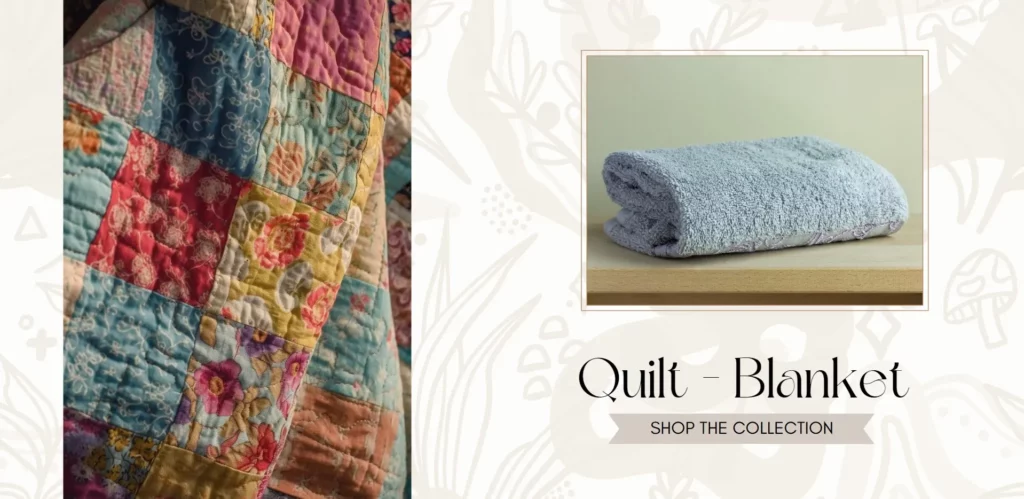News
Quilt vs. Blanket: Understanding the Differences
Two common choices spring to mind when it comes to staying warm and toasty on winter nights or adding a hint of coziness to your interior design: quilts and blankets. Though the main function they both fulfill is to keep people warm, they differ in a few key ways. We will examine the distinctions between blankets and quilts in this blog post to assist you in making the best decision for your unique requirements.
Quilts: The Artistic Heirlooms
In addition to being useful bedding, quilts are artistic creations. Usually, they consist of three layers: a bottom layer made of a single piece of fabric, a middle layer of batting for insulation, and a top layer comprised of many fabric pieces sewn together. Because of their famously complex and frequently handmade designs, quilts are treasured family heirlooms in many households.
- Aesthetics: Patchwork, appliqué, and embroidery techniques are frequently used to create the intricate and artistic motifs that are characteristic of quilts. They are a beautiful accent to any space because they come in a variety of hues and designs.
- Weight and Warmth: Quilts are meant to be comfortable and warm. They are perfect for colder locations or the winter because of their layered design and batting, which offer superior insulation. They may feel heavier than blankets, though, due to their warmth.
- Durability: Quilts are made to last for years on end because of their fine stitching and sturdy materials. They can become treasured family treasures and are frequently passed down through the years.
- Maintenance: Especially if they are handmade or ancient, quilts may need extra attention to stay in good condition. This includes gentle washing and periodic cleaning.
Blankets: Adaptable and Useful
A common sight in homes all throughout the world, blankets are prized for their usefulness and adaptability. Usually consisting of a single layer, these textiles can be manufactured from fleece, cotton, wool, or synthetic blends, among other materials. Blankets are simple, practical, and useful for many applications.
- Functionality: The main purpose of blankets is to keep people warm and comfortable. They are frequently used as a wrap-around during outdoor activities, as an extra layer on the bed, or as a throw on the couch.
- Variety: To accommodate a range of tastes, blankets are available in an abundance of designs, hues, and textures. They come in an assortment of weights, ranging from thin throws to thick winter blankets.
- Upkeep: In general, blankets are simple to maintain. The majority are easily machine-washable and dryable. They are therefore a practical option for daily use.
- Portability: Blankets are frequently easier to carry than quilts because of their single-layer construction. They are lightweight and portable, making them perfect for camping excursions, picnics, and last-minute traveler layers.
Selecting Between Blankets and Quilts
Your unique demands and preferences will ultimately determine whether you choose a blanket or a quilt:
- Colorful Appeal: Maybe a quilt would be a better option if you’re seeking for a decorative item that can also act as insulation. They may give your home more charm and personality.
- Weight and Temperature: Quilts are a great way to add extra warmth during the winter months. But blankets are a better fit if you’d rather go lighter, especially in the summer or in a milder area.
- Sturdiness: Invest in a quilt if you want something sturdy and heirloom-quality. Covers are an excellent option if you’re looking for something more changeable and practical.
- Maintenance and Care: Take into account your lifestyle and the amount of time you’re willing to devote to upkeep and care. In this sense, blankets usually require less work.
In conclusion, blankets and quilts each have special qualities and benefits of their own. Because of their warmth and artistic quality, quilts are highly valued and make lovely additions to any home. Conversely, blankets are a sensible option for daily usage because to their adaptability, durability, and ease of upkeep. The choice ultimately boils down to your individual requirements, tastes, and the atmosphere you wish to establish in your living area.


